Compression socks are medical products specifically created to help prevent and treat leg diseases caused by poor blood circulation in the legs.
They are great for relieving swelling and aching of the legs, ankles, and feet — particularly caused by extended hours of sitting or standing.
In this article, we are going to discuss the benefits of compression stockings. We will also touch on women’s compression socks in particular.
What are Compression Socks?
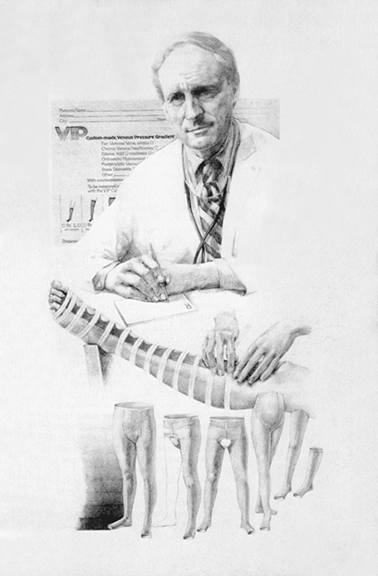
Compression socks were invented by a German engineer, Conrad Jobst. Prior to this great invention, Jobst suffered from venous leg ulcers. He soon realized that his legs felt better when he emerged them into a pool of water. He worked together with Dr. Otto Gauer to create what later become the compression socks that we use today. His goal was to create something that would ultimately improve blood flow in the legs and feet.
What Compression Socks Do and How They Help
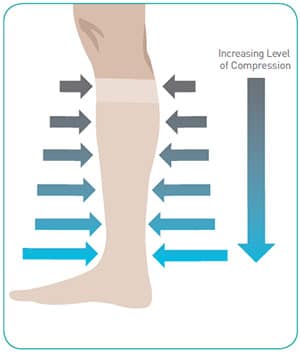
By gradually increasing pressure on the legs, compression socks/compression stockings are proven helpful when it comes to your blood circulation (especially in the lower extremities due to the pull of gravity). At the same time, they help in straightening out the vein walls. The gentle compression applied allows the valves to function better by opening and closing blood flow towards the heart. This prevents the blood from flowing backward (or in the wrong direction). In turn, circulation starts to work as it should.
Diseases Caused by Poor Blood Circulation That You Can Prevent with Treatment:
- Venous reflux disease (chronic venous insufficiency)
- Varicose veins
- Spider veins
- Deep vein thrombosis
- Peripheral edema
- Lymphedema
- Phlebitis
- Lipodematosclerosis
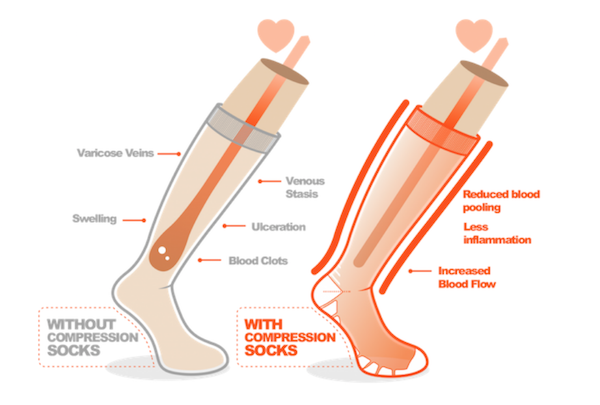
Compression Level Guide – Essential Health
Learn About Compression Therapy
Although we will focus on compression socks of 15-20 mmHg, we are going to take a look at the complete compression pressure levels to give you a better idea on a wider scope. The compression pressure level is measured by the units of “mmHg”, which stand for “millimeters of mercury”. Standard compression pressure comes from varying degrees of compression. Let’s look at all four compression pressure levels and their benefits.

Level 1- Over the Counter
15-20 mmHg
- For the prevention and relief of minor to moderate varicose and spider veins
- Helps relieve tired, aching legs, and minor swelling of feet, ankles, and legs
- Helps prevent varicose veins and spider veins during pregnancy
- Helps prevent deep veins thrombosis, also known as Economy Class Syndrome
- Used in post-sclerotherapy treatment to help prevent the reappearance of varicose veins and spider veins
- Ideal compression level used for those traveling long distances
This low compression level is suitable for everyday wear for everyone with mild swelling and fatigued legs (due to long periods of standing, sitting, and traveling). It is a popular choice as a barrier to entry and is recommended if you are trying it for the first time for daily use.

Level 2- Medical Grade Class II
20-30 mmHg
- Helps prevent and relieve moderate to severe varicose veins (also during pregnancy)
- For post-surgical and post sclerotherapy treatment to help prevent the reappearance of varicose and spider veins
- Helps in the treatment of moderate to severe edema or lymphatic edema
- Helps with the management of active ulcers and manifestations of post-thrombotic syndrome
- Helps relieve superficial thrombophlebitis
- Helps prevent orthostatic hypotension (or postural hypotension)
- Helps prevent deep vein thrombosis, also known as Economy Class Syndrome
The 20-30 mmHg level of compression is the first medical-grade compression. It’s the most widely used medical-grade because it provides competent compression to your legs without being too strong. This level is suitable for varicose veins patients, patients that are recovering from venous surgery, and pregnant women during the third trimester.

Level 3- Medical Grade Class II
30-40 mmHg
- Helps prevent and relieve severe varicose veins
- Used in the treatment of severe edema and lymphedema
- Used in post-surgical and post-sclerotherapy treatment to prevent the reappearance of varicose and spider veins
- Helps reduce the symptoms of Orthostatic Hypotension (or post-thrombotic syndrome)
- Prevent deep vein thrombosis, also known as Economy Class Syndrome
The 30-40 mmHg level of compression is a stronger medical grade class II that is recommended for moderate to severe leg health symptoms. It is great for patients with lymphedema, severe varicose veins, venous reflux disease, and deep vein thrombosis.

Level 4- Medical Grade Class III
40-50 mmHg
Acute leg/Ankle swelling
Varicose veins
Chronic vein insufficiency
Deep vein thrombosis
The 40-50 mmHg level of compression provides the strongest compression level and is not for ordinary use. It is vital to consult a doctor before using level 4 compression socks. This level of compression or compression higher than 50 mmHg is generally indicated for severe venous stasis, wound management, lymphedema.
Always Consult Your Doctor

⬆️ Ask this guy for the right compression that suits and your needs.
First, Ask Yourself the Right Question
Why Do You Need Them?
There are typically two groups of people who wear compression socks:
1. People already managing signs and symptoms of leg diseases. These people typically have a recommendation from their doctors for compression sock therapy. They usually need at least 20 mmHg and up to 60 mmHg, depending on the severity of their symptoms.
2. People wearing compression socks as a preventive measure to keep their leg health in check. Typically, compression therapy of 15-20 mmHg is good enough for this group of people. Also, they do not require prescriptions from a doctor to utilize this amount of compression pressure.
If you fall into group 2, compression socks that provide support between 15 and 20 mmHg are perfect for you. You may wonder why, if you’re already participating in preventative measures such as hygiene and exercise, you would want compression socks. You may ask yourself why compression socks are recommended or if they’re necessary. We are going to focus on their benefits.
Today we are specifically going to talk about compression socks of 15-20 mmHg. Compression socks at 15-20 mmHg can be worn by anyone without the need for a prescription because they provide moderate compression and will not “suffocate” the person wearing them.
Compression Socks For Women
Prevention is the Best Treatment
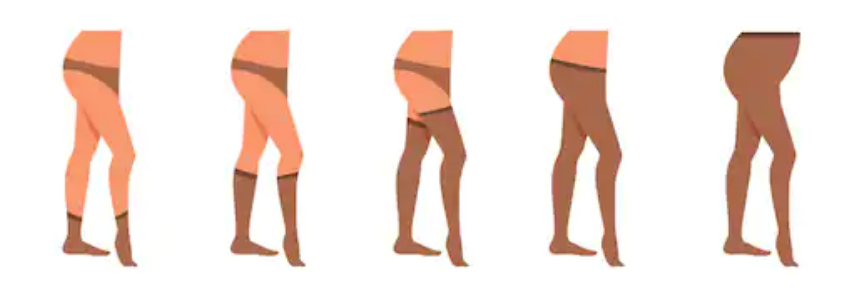
Gone are the days where compression socks/stockings are only worn by patients with leg diseases as treatment. Compression socks are worn by millions of people around the world, assisting them to achieve better leg health on a daily basis. Even though compression socks are a unisex product, there are compression socks designed for women. Compression stockings vary in length, style, pattern, and compression pressure level. So, what type of compression socks are most suitable for women?
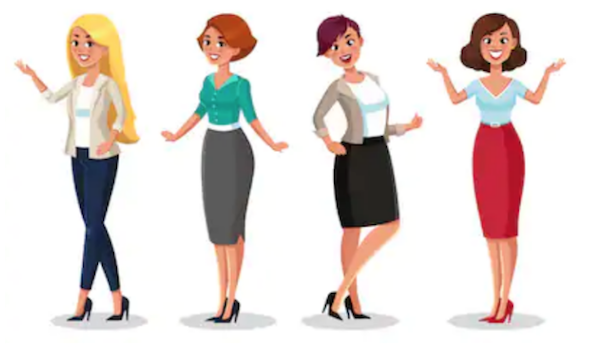
These are some of the more popular occupations that working women may require compression socks for:
Suitable for women working as:
- Nurse
- Waitress
- Chef
- Receptionist
- Doctor
- Office lady
- Teacher
- Athlete
- Stay at home mum

The list can go on and on. With that being said, at the end of a long workday, women often end up at home swelling and aching in the legs, ankles, and feet. Women also frequently wear high heels, which can be very damaging to the legs. Over time, if these conditions are left untreated, they can slowly develop into a variety of leg diseases. Varicose veins are probably the number one manifestation, and they are serious cosmetic and health concerns.
Varicose Veins
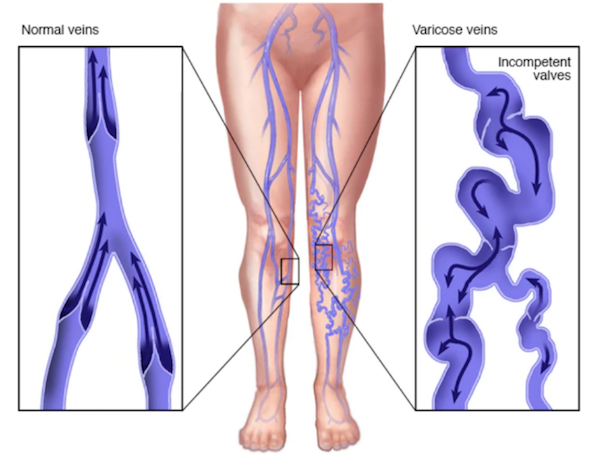
Varicose veins are ugly, swollen veins in twisted forms caused by blood stasis and weak vessel walls. They can occur in various parts of the body. They might appear as clusters of blue or purple lines visible underneath the skin, and they are sometimes surrounded by thin red capillaries known as spider veins. Although they can occur in various parts of the body, they occur most often in the lower extremities. It is also worth emphasizing that varicose veins are secondary manifestations of other leg diseases.
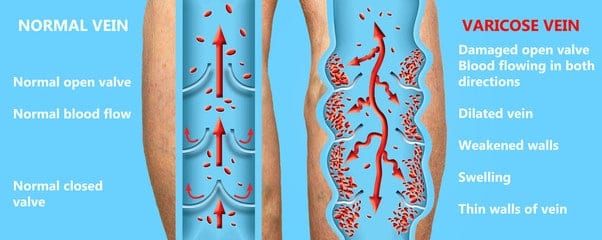
Varicose veins are developed due to disrupted blood circulation, causing the blood to clot in a pool in the vein. When your blood fails to flow back to your heart against the gravitational effects, your venous valves are damaged and can not close properly.
They can develop into a serious health concern.
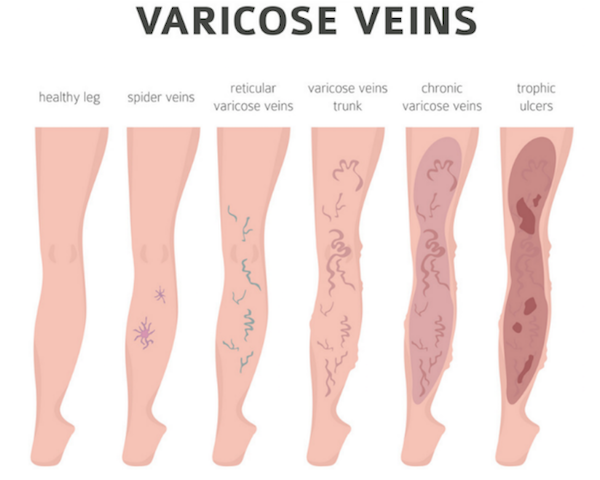
If left untreated, they can develop into severe leg conditions that are more than just a cosmetic concern. Varicose veins can be life-threatening.
What do Varicose Veins Look Like?
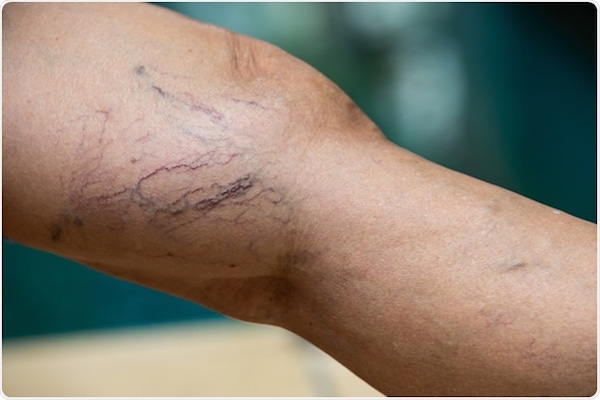
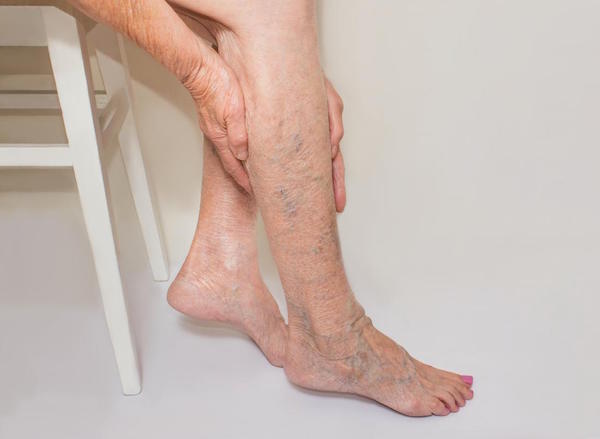
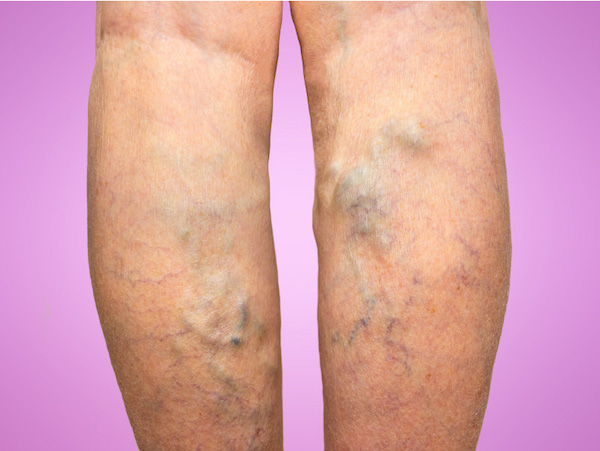
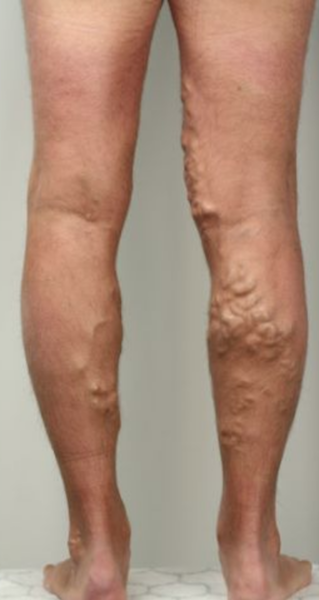
Prevent = Treatment

We do not want varicose veins creeping up our legs, which is why prevention is the best treatment. Wearing compression socks of 15-20 mmHg is the best preventive measure that can stop this kind of thing from happening to the legs. When varicose veins are already formed and the condition is not getting any better, patients should wear compression socks or compression stockings for therapy at a higher mmHg as treatment.
Popular Articles on ComproGear
Penis Straws Where to Buy Penis Straws for Bachelorette Party
Car Air Purifier Best Car Air Filter Review
How to Buy Compression Socks Purchase Compression Stockings Here
How Long To Wear Compression Socks for Edema Compression Socks for Water Retention
What Are The Best Socks for Circulation Best Socks for Circulation
Compression Stockings mmHg Chart What Strength of Compression Socks Do I Need?
Compression Socks 15-20 mmHg
(Knee-High, Thigh-High, Ankle-High, Open-Toe, Closed-Toe)
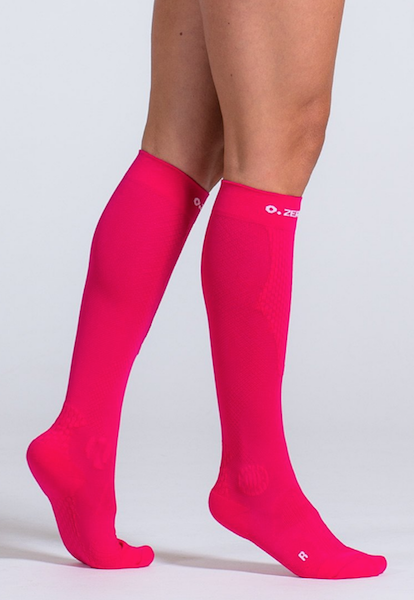
There is a variety of compression socks that can help all the women out there to achieve better leg health. Whether it’s their funky pattern, style, or length, there must be one in the market for every woman out there. A lot of the compression legwear these days come with silicone border for better grip to prevent the socks/stockings from slipping. Some even have zippers for easier applications and removals. Let’s look at how many different types of compression socks out there.
1. Knee-High Compression Socks
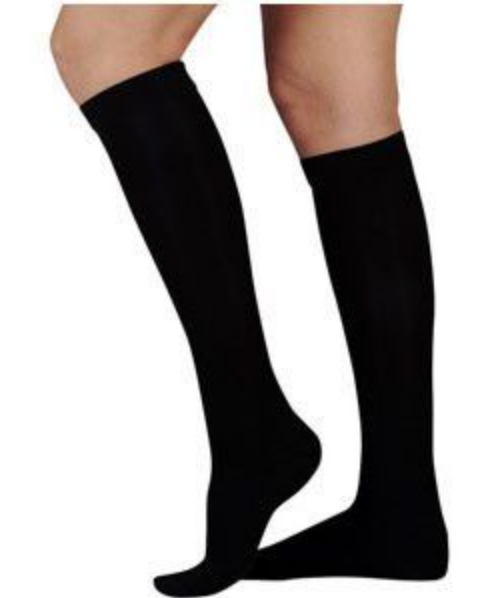
Knee-high compression socks for women

Open toe, knee-high compression socks with silicone border for women
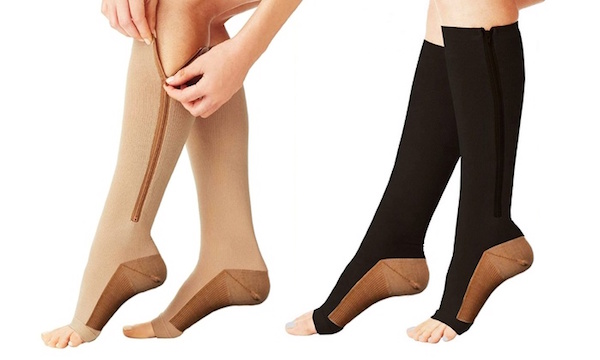
Open-toe, knee-high compression socks with zippers
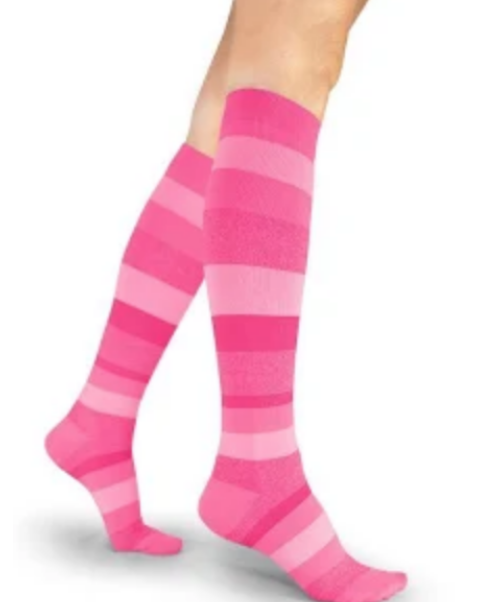
Closed-toe, knee-high compression socks with funky patterns
Knee-high compression socks are probably the most common above all of the others due to their functionality in combating all sorts of unhealthy leg symptoms. This length of compression socks provides compression support to your calf muscles, your ankles, and your feet.

2. Thigh-High Compression Socks
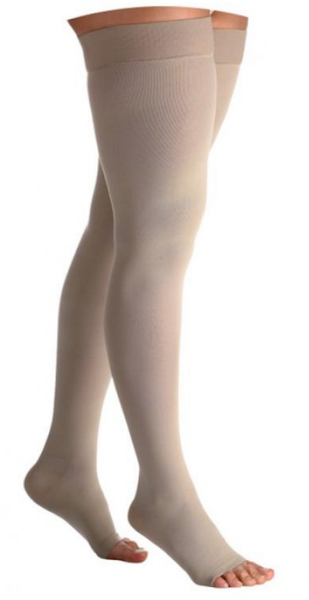
Open-toe, thigh-high compression socks with silicone border for women

Closed-toe, thigh-high compression socks with silicone border for women
Thigh-high compression socks are great for women who are looking for support all the way up to the thigh. They apply the highest pressure around the ankle, moderate pressure around the calf and the lowest pressure around the thigh. Compression socks are also great at combating varicose veins, muscle cramps, edema, and all of the other leg diseases. Bear in mind, a lot of the thigh-high compression socks sold in the market are wrongly advertised by irresponsible sellers as a tool to achieve slimmer legs by wearing them to sleep. That is not medically proven, and in fact, it can cause major harm to the body in the long-run if compression socks are worn to sleep. They can help by preventing and relieving edema in the lower limbs, but they WILL NOT burn fat while you sleep in them.
3. Ankle Compression Socks

Open toe, ankle-high compression socks
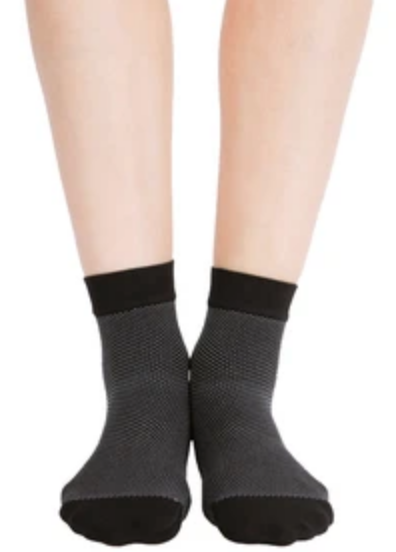
Close-toe, ankle compression socks
Ankle compression socks are only applying compression pressure to your ankles and your feet. They are great at relieving swelling and aching of the feet and can accelerate the healing of injuries like ankle sprains. They are also particularly great as a treatment for plantar fasciitis and arthritis.
Compression Stockings are Great Alternatives for Women
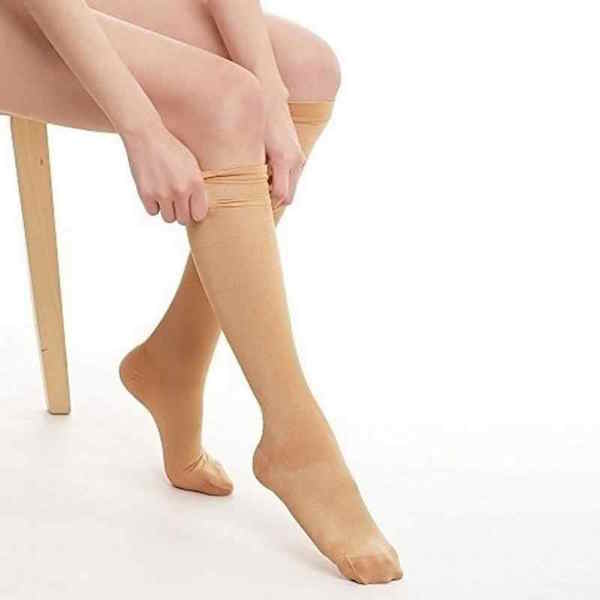
Compression Stockings 15-20 mmHg
(Knee-High, Thigh-High, Ankle-High, Open-Toe, Closed-Toe, Pantyhose)

They function of these is the same principle as compression socks: to provide the compression support needed for the best compression therapy. The only difference between the two, which would be the ultimate difference, would be the thickness and sheerness.
1. Knee-High Compression Stockings
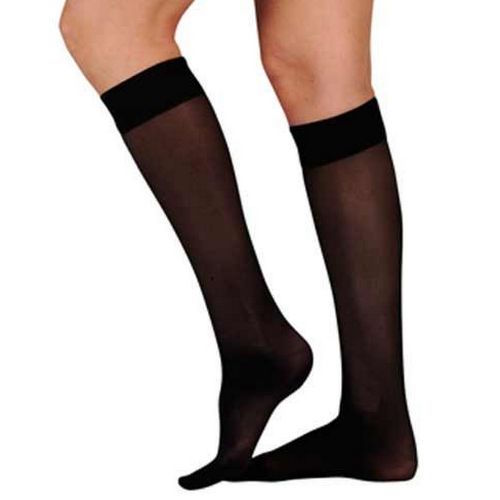
Close-toe, knee-high compression stockings with silicone border
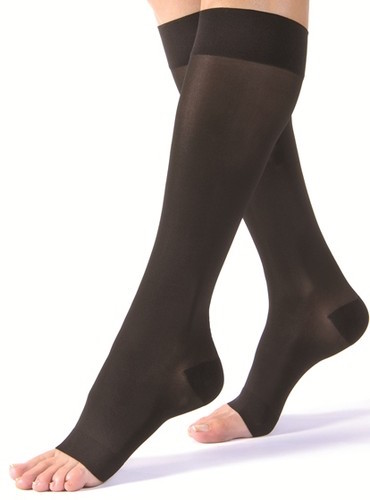
Open toe, knee-high compression stockings

2. Thigh-High Compression Stockings
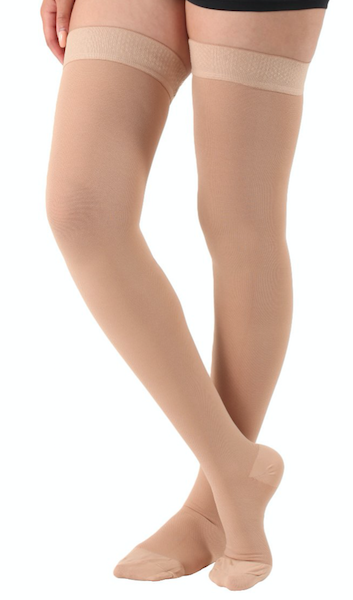
Close-toe, thigh-high compression stockings with silicone border

Close-toe, thigh-high compression stockings with lace border
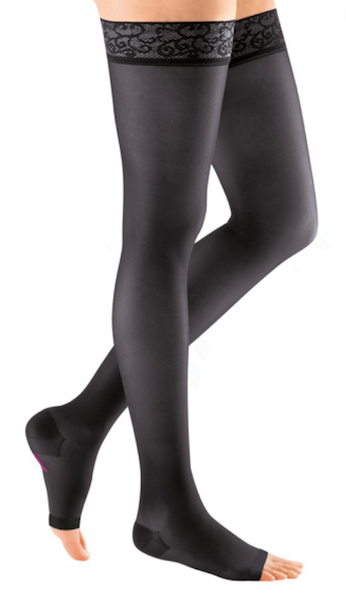
Open toe, thigh-high compression stockings with lace border

3. Ankle Compression Stockings
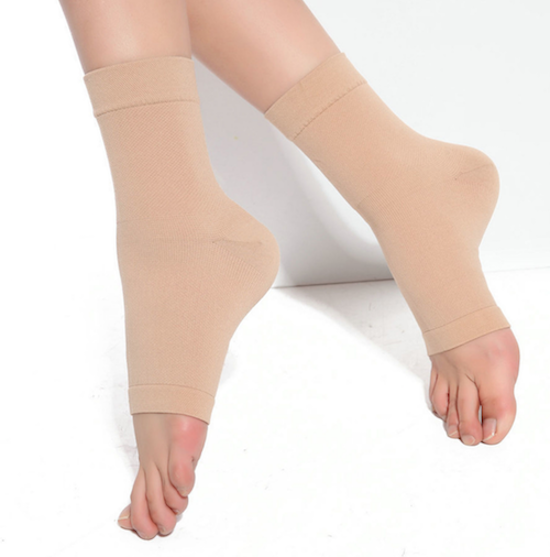
Open-toe ankle compression stockings

Closed-toe ankle compression stockings

4. Compression Pantyhose
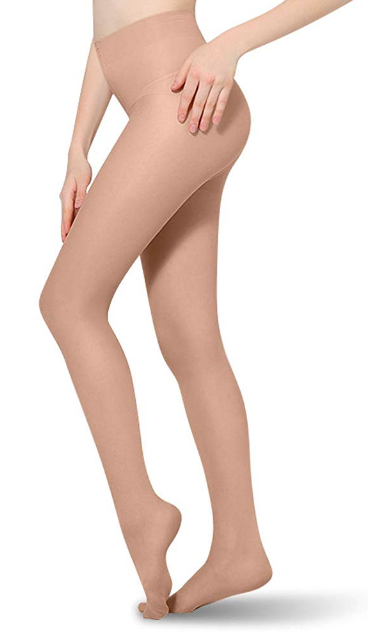
Closed-toe compression pantyhose
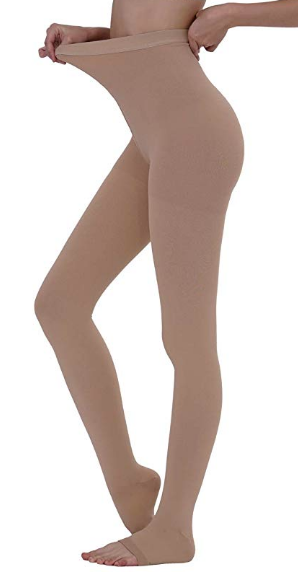
Open-toe maternity compression pantyhose
Compression pantyhose provide compression support all the way through the lower limbs and are ideal for women who wear pantyhose on a regular basis. Other than that, there are maternity compression pantyhose designed for pregnant women to help eliminate lower-limb edema during the third trimester. They can prevent deep vein thrombosis after delivery.
Closing
It Might Be a Good Idea to Buy a Few Pairs!
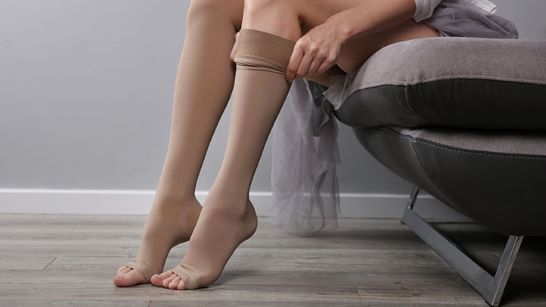
We have covered all types of compression socks and stockings of 15-20 mmHg for all of the ladies. There is no right or wrong answer to which compression socks/stockings you should go for. It is just a matter of personal preference. The more important factor to consider is the compression level you are going for. Compression pressure at 15-20 mmHg is a great barrier for entry for anyone, and they are especially great for all of the women in the world looking to ease their aches and pains at the end of a long workday. If you are currently having some unhealthy leg symptoms and need higher compression therapy as treatment, consulting a doctor at your nearest clinic for a prescription is highly recommended. Otherwise, go get yourself a few pairs of these to rejuvenate tired legs!💃
